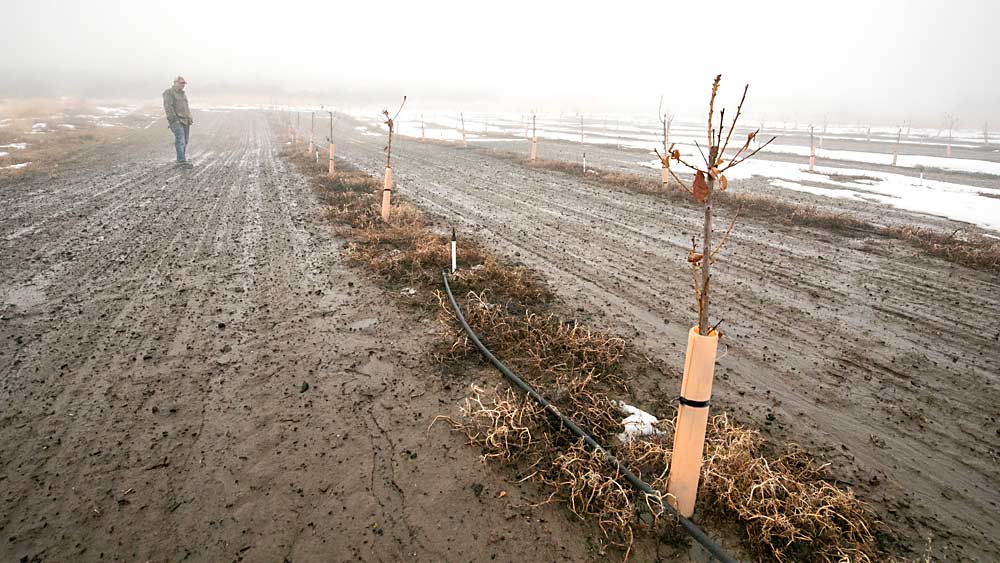
Last year, scientists planted a cherry block miles away from Washington’s commercial operations, to create a place to safely study the progression of X disease, even as they have urged growers to remove infected trees as soon as possible.
But before they could inoculate the new trees and set up experiments, two of the almost 80 Bing and Gabriel trees they planted tested positive for X disease, said Rodney Cooper, leader of the U.S. Department of Agriculture’s Wapato research lab, which owns the site.
Those positive tests were among many the researchers found in planting stock last year, a first for the Northwest cherry industry that has been grappling with an X disease epidemic for the past several years. X disease is caused by a phytoplasma pathogen spread by leafhoppers and leads to small, pale, bitter fruit.
“We’ve had suspicions that it could be coming in through planting stock (in addition to leafhopper vectors) but didn’t have evidence until last year,” said Scott Harper, a pathologist at Washington State University.
Improved testing approaches — knowing when and where to look — garnered positive results that would have previously gone under the radar because non-fruit-bearing trees don’t show any symptoms, and early-stage infections can be difficult to detect in small samples.
In response, the nursery industry rallied to join the efforts of the industry’s Little Cherry Disease Task Force, creating a subgroup focused specifically on protecting the tree supply.
“We’ve identified best management practices, done a preliminary survey, secured additional funding, and the diagnostic lab has more capacity,” said Tianna DuPont of WSU Extension, who leads the group. “In the face of a difficult problem, everyone has been very forward-thinking and willing to come up with solutions.”
The evidence
Several X disease studies underway around the Pacific Northwest also uncovered infections in nursery stock last year.
In 2021, as part of a study to see if root-grafting played a role in transmitting X disease to replacement trees, WSU researchers tested samples from dozens of young trees planted in several commercial orchards in the Yakima Valley. Half of the trees, all negative, were then caged to prevent leafhopper transmission.
But when they sampled again in July 2022, about 40 percent of the caged trees tested positive, the same as the control trees, said WSU extension specialist Bernardita Sallato when she spoke about the findings to the Washington Tree Fruit Research Commission, which funded the work.
The amount of X phytoplasma found in the 2022 samples suggests that the infections were not recent but, rather, had been missed in the prior year’s testing. As the disease progresses, the volume of the pathogen in the tree increases exponentially, Harper said, but in early-stage infections, the odds of detection are low.
“The longer after infection, the more likelihood you have of finding it, but we don’t want to wait too long,” he said. “When they first tested the trees, they only took small samples. Nursery trees are small; you can’t take a lot off of it because you’ll kill it.”
In another research project, Harper took more aggressive samples from the planting stock from Washington and California nurseries at four new peach orchards and four new cherry orchards last spring. By “dismembering the little trees,” he found positives in all four peach lots and two of the cherry lots, with positives ranging from 5 to 12 percent of the samples.
The level of infection in those positive trees “looks more like leafhopper transmission in terms of what we’ve seen in the field experimentally,” he said. Leafhopper feeding tends to just drop off a few phytoplasma cells, which take time to proliferate, while grafting with infected wood can deliver far more cells.
The Washington State Department of Agriculture’s Fruit Tree Certification Program also began a survey last year of all 10,000 or so certified stone fruit mother trees in the program, said Segun Akinbade, the program coordinator.
“Out of the 400 or so mother trees tested so far, only one of the nursery blocks had some positives,” he said. Those trees have been removed and treated with herbicide.
The testing effort will ramp up this summer, he added, when the X phytoplasma can reliably be detected.
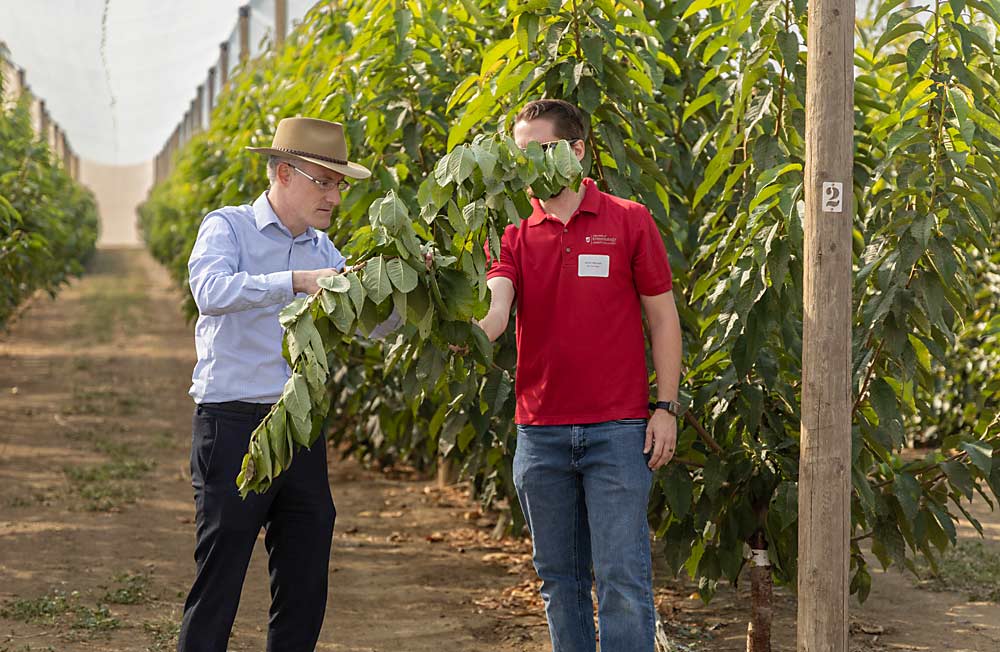
The response
Historically, the certification program has operated on visual inspections, with subsequent testing when symptoms are apparent. But the only visual symptom of X disease is the small, pale fruit. Few cherries are found in the nursery, hence the need for more thorough testing.
“A unique issue with the X disease is that there is potential for infections within the certification program. The trees are out there exposed to vectors,” said Bennett Mayo, manager of Mike and Brian’s Nursery in Zillah, Washington, and chair of the Northwest Nursery Improvement Institute. “That’s why the certification program is now testing 100 percent of the mother trees in the program, to make sure they are clean. And once we start clean, we have to stay clean.”
Nurseries are adopting the same aggressive methods for leafhopper management as cherry growers, he said, and managing for the broadleaf weeds that attract them. His nursery is also locating nursery blocks in isolated areas.
‘The biggest need is a more inexpensive testing protocol,” Mayo said. At $100 per sample, even testing a meaningful sample of a tree order is cost prohibitive. That’s why the certification program focuses on testing the mother trees, followed by vector management. The nursery association is also funding research, in partnership with the research commission, on less expensive diagnostic techniques, he added.
In September, Gold Crown Nursery in Quincy, Washington, hosted a field day with WSU for the nursery industry to discuss best practices for taking samples to test, and for monitoring and management of the leafhopper vectors.
Owner Dale Goldy also showed attendees the netted structure he installed to protect his certified mother block from leafhoppers, inspired by the nets he’s seen used for spotted wing drosophila control in Italy.
“We’re still in the discovery phase of figuring out if this works, but it’s interesting to watch because the tree growth under this net is ridiculous,” Goldy said. He planned to take the nets down in late fall — when leafhopper pressure subsides — but before snowfall.
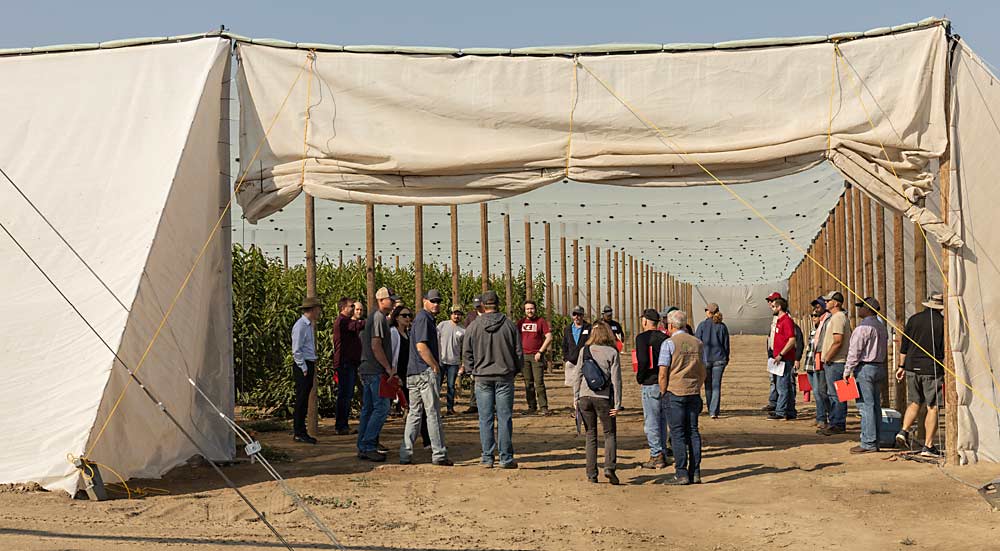
The net structure used a heavy weave for the sides, to block the hopping hoppers, but a more porous, sunshade-style net on top. The leafhoppers don’t fly well and “they aren’t going to hit that wall, climb all the way up there, and come down to get through,” said Adrian Marshall, a postdoctoral entomologist at WSU. Because they feed on a wide variety of species, “they will stay where the food is good.”
“It’s a camouflage thing as much as anything,” Goldy added.
That may seem extreme, but more stringent measures are being taken elsewhere for similarly damaging diseases: Florida now requires all nursery stock in the citrus industry to be produced inside greenhouses or other protective structures, to prevent the spread of citrus greening or Huanglongbing, a phytoplasma disease spread by the Asian citrus psyllid.
Currently, there’s been no discussion of such requirements in the Pacific Northwest. At this time, the WSDA is working to update the certification program to include the leafhopper control and more frequent testing requirements that the industry is already voluntarily adopting, Akinbade said.
The WSDA’s testing focuses on the mother trees in the certification program, but many nurseries also sell uncertified stock. Before X disease, some growers didn’t value the added cost of certified planting stock, but now there is more demand for certified trees, Mayo said. For some newer varieties, though, the supply of certified scion wood may be limited.
While some growers have paused cherry replanting in the face of disease pressure, the demand for cherry trees is up as many others replant, Mayo said.
“It’s all about individual risk levels,” he said.
by Kate Prengaman
X disease, evolving
This is not your grandfather’s X disease.
Genetic research into the phytoplasma pathogen plaguing Pacific Northwest Prunus plantings shows the recent outbreak is driven by different strains than previous outbreaks decades ago, said Washington State University pathologist Scott Harper.
“We’re dealing with a different beast entirely,” he said of the pathogen known as Candidatus Phytoplasma pruni.
Previous outbreaks, in Washington in the 1950s and in California in the 1970s, were driven by what Harper now calls “Group 1.” That phytoplasma also caused leaf bronzing symptoms that made it easier to detect and remove.
The newly detected strains, groups 2 and 3, appear to be far more effective at transmission via leafhopper feeding. Group 3, in particular, seems to be spreading aggressively and has a very wide host range in fruit trees, common orchard weeds and native species.
“It’s more transmissible and has a wider host range. This explains why it’s blowing up,” Harper said.
The genetic analysis now allows his team to “fingerprint” infections and track the patterns of spread. In one example he shared during a talk at the Washington State Tree Fruit Association’s annual meeting in December, an orchard he studied for several years showed one cluster of Group 2 positives, which were spreading slowly to neighboring trees. Then a Group 3 infection showed up on the other side of the block, identical to the strain found in a neighboring orchard, and began to spread more rapidly and widely.
Harper hopes the new insight into how, where and when the pathogens are moving, in orchards and around the region, will help to inform the industry’s response.
For example, the more transmissible Group 3, which has been driving the outbreaks in the hard-hit Yakima Valley for several years, has recently arrived farther north in Washington’s Wenatchee Valley, he said.
—K. Prengaman

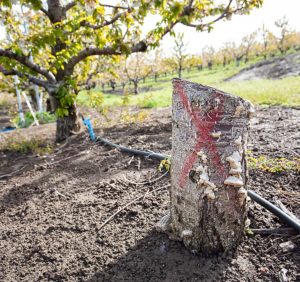
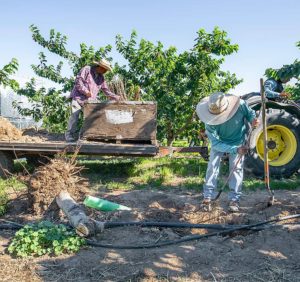
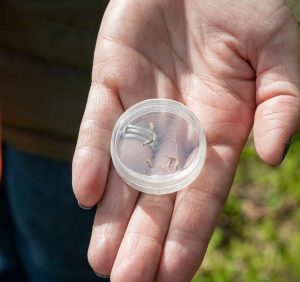
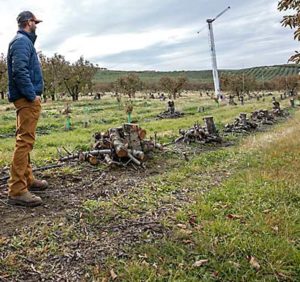





Leave A Comment